The main purpose of this ongoing blog will be to track planetary extreme, or record temperatures related to climate change. Any reports I see of ETs will be listed below the main topic of the day. I’ll refer to extreme or record temperatures as ETs (not extraterrestrials).😉
Main Topic: Heatwave Nomenclature Rules For 2022
Dear diary. Welcome to May. We are rapidly headed towards summer across the Northern Hemisphere, which is becoming more deadly with time due to increasingly worse heatwaves. Just ask the folks living in the Pacific Northwest and British Columbia about June of last year as they encountered CAT5 Beta. That one produced this amazing stat:
Already in April we have seen many pockets of heatwaves around the planet, which I could have named. One historic heatwave is occurring in and around India at the moment. This year though, let’s concentrate on naming and categorizing domestic heatwaves for a good demonstration of this scheme, pretty much using the criteria from last year. If you would like me to adjust some of the criteria and these rules, please drop me a note:
Let’s initially try to define heat wave severity and intensity on a day-to-day basis. My parameters introduced today are fairly rough around the edges and somewhat subjective, but if there is enough discussion and consensus within the meteorological community perhaps in time harder definitions based on sound science can come to fruition.
Mirroring the Saffir-Simpson scale let’s define a weak or low level category one heat wave as a fairly minor nuisance that can be dealt with using proper precautions and one that is truly deadly, in which you would not want to leave a location with air conditioning to go outside under any circumstances for no more than a few minutes, as a five. What I will do here is roughly define this 1-5 scale and give an example, also using 500 millibar charts.
1) CAT 1: Low level heat wave. Occurs when temperatures and humidity get hot enough to threaten the health of susceptible people over an area at least as large as a medium size state. Heat advisories from the National Weather Service will be in place with perhaps a small area of heat warnings. Temperatures don’t necessarily have to get as hot as record levels, but humidity levels must be sufficient to produce a heat index above 95°F.
The typical early July weather we saw on 7/2/2020 across the south-central U.S. was spot on for a CAT 1 heat wave. Here are current heat advisories posted for that heat episode:
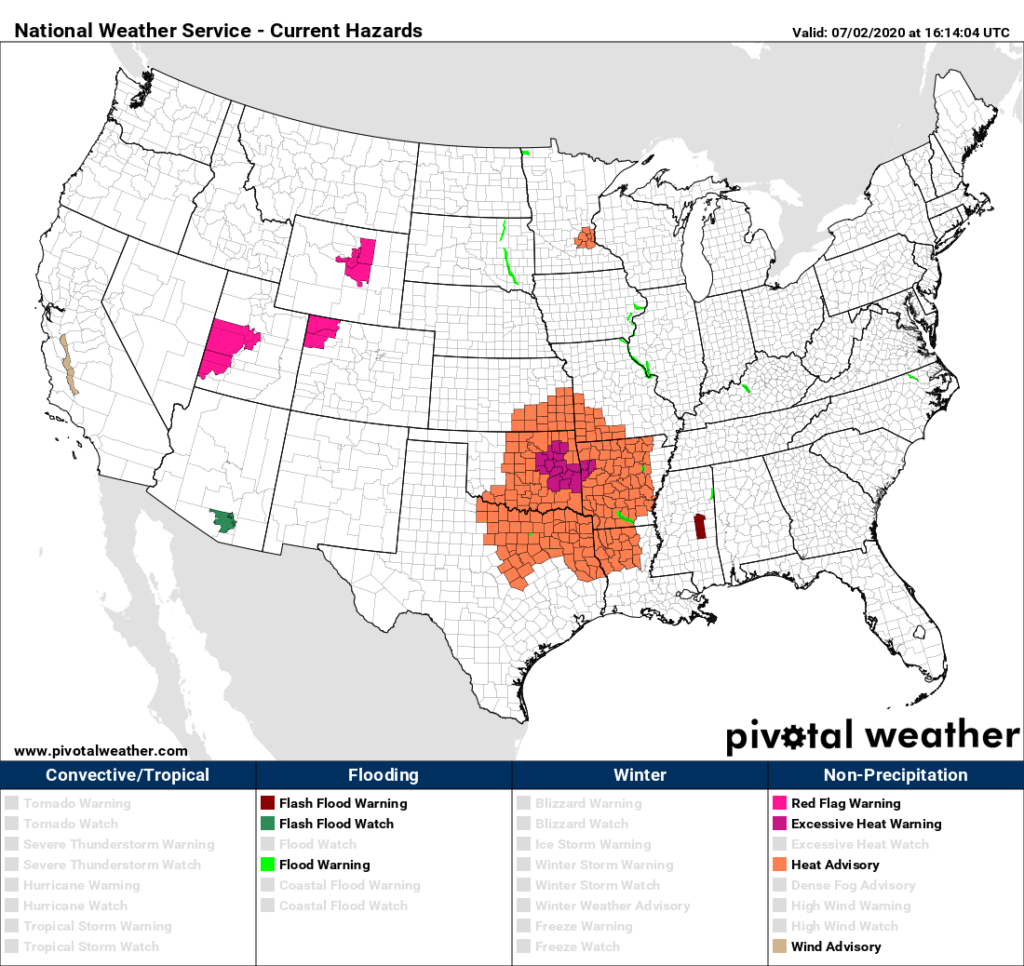
For the rest of this summer (or as long as heat advisories are posted for a portion of the United States) When relevant I will post the above NWS graphic describing the severity of our ongoing heat wave on a scale of 1-5 before I get into the main topic of the day.
At 500 millibars here is what we see from 7/2/2020, which would be typical for my CAT 1 heat wave definition:
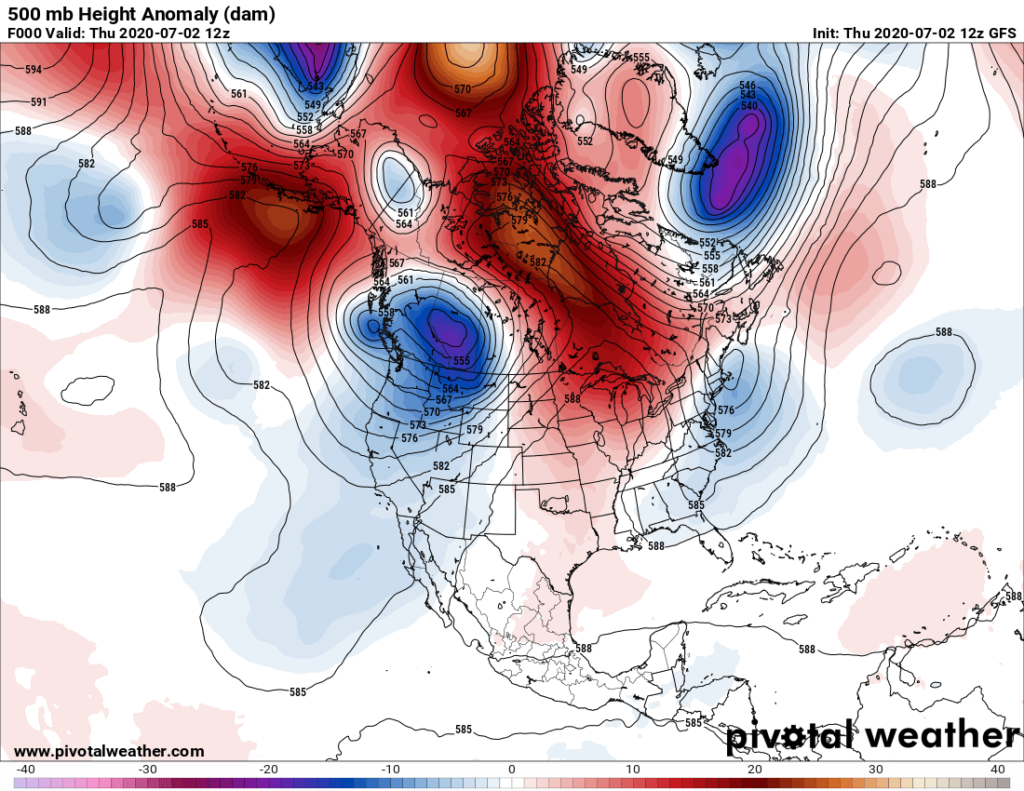
2) CAT 2: Medium level heat wave in which areas have been subjected to temperatures and humidity sufficient to produce NWS heat advisories and warnings for at least three consecutive days. Temperatures may get close to record levels for a couple of days.
Here is a heat dome that would be typical for a CAT2:
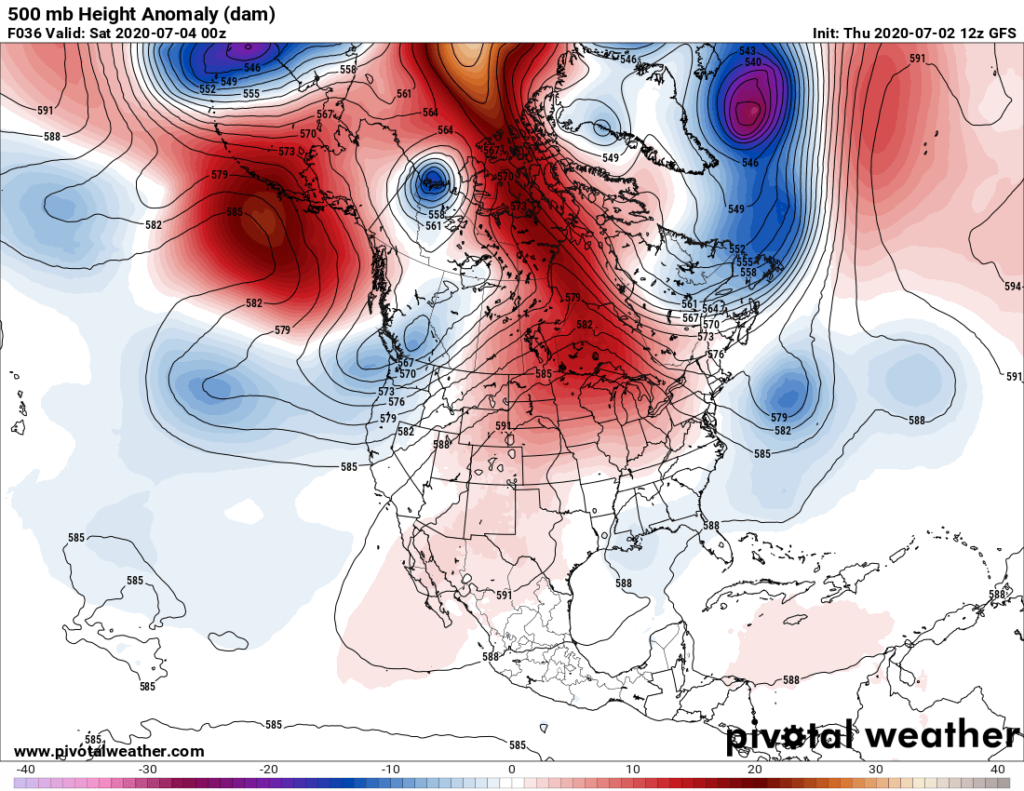
3) CAT 3: Medium level heatwave severe enough such that a few fatalities are reported. A city in a CAT 3 heat wave would be under a heat emergency for a few days. Many heat records would be either tied or broken.
A CAT3 or higher heatwave would be considered to be a major heatwave and would get a name.
Indeed, a CAT 2 heat wave would grow into a CAT 3 system if we see a 500 millibar ridge enveloping much of the Plains like so:
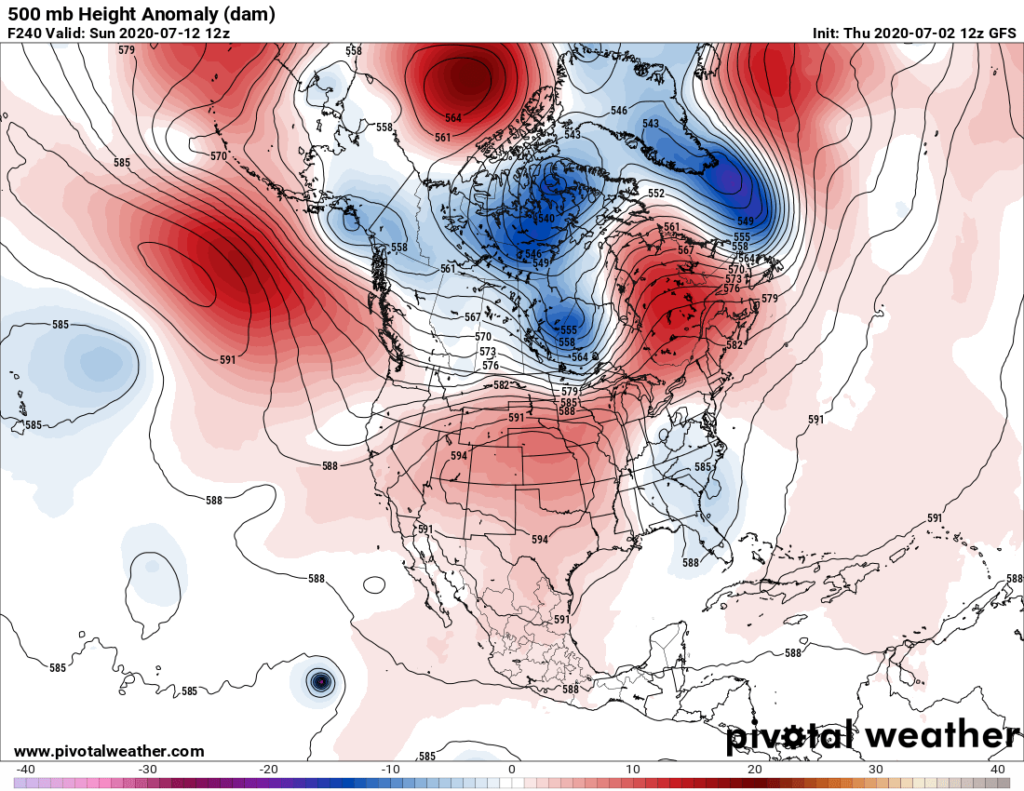
4) CAT 4: High level heat wave severe enough to produce over 500 deaths to susceptible people. The city of Chicago had one of these back in 1995. Read about that here:
https://en.wikipedia.org/wiki/1995_Chicago_heat_wave
Such a heatwave would require a stable ridge at 500 millibars, with heights more than likely greater than 594 decameters, that would last for days and not move much:
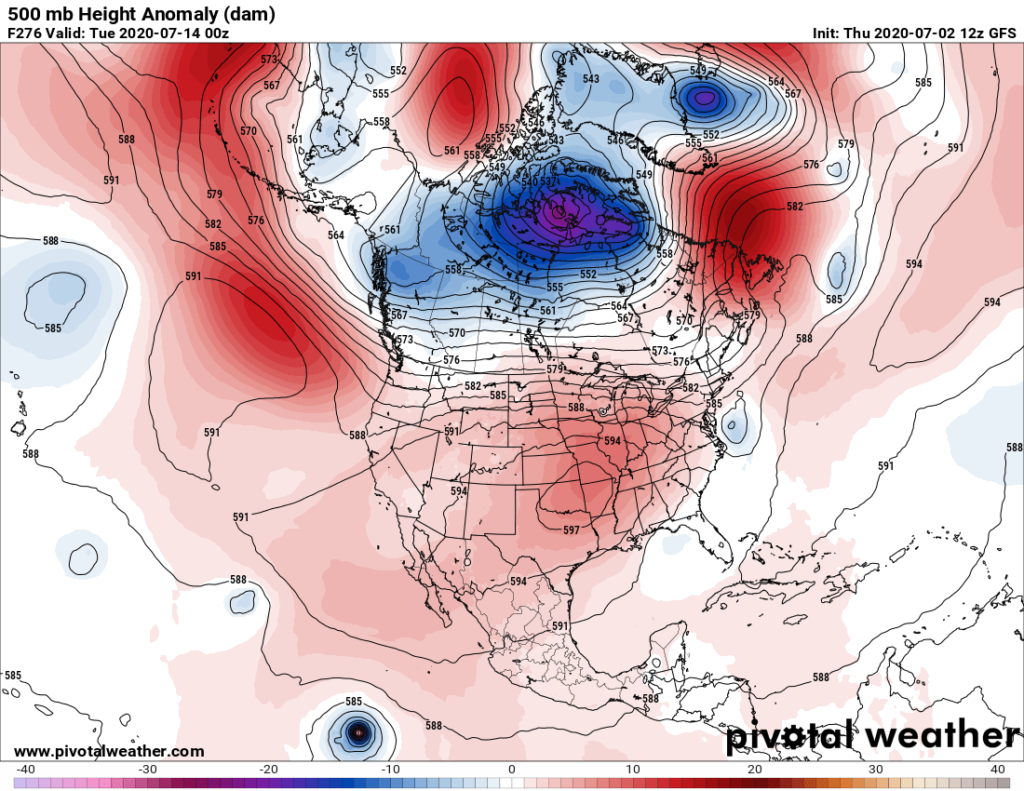
5) CAT 5. Catastrophic heat wave. Many all-time temperature records would be shattered with thousands of deaths a possibility. Remember the European heat wave of 2003 in which there were well in excess of 10,000 fatalities? This event would certainly fit my CAT 5 category.
https://en.wikipedia.org/wiki/2003_European_heat_wave
| Difference in average temperature (2000, 2001, 2002 and 2012) from 2003, covering the date range of 20 July – 20 August[1] | |
| Date | July 2003 – August 2003 |
|---|---|
| Location | Europe |
| Type | Heat wave |
| Deaths | 50,000 – 70,000 |

Now that we have established some criteria, how about names for 2022? Let’s use fiery, hot male dragon names from this list (I may use female names next year.):
Male dragon names
Check out these cool male dragon names:
Apalala – one of the Hindi water dragon names.
Apep – to slither. Apophis – to slither. Askook – the snake.
Astarot – the leading one or the chief.
Attor, Ator – gall; poison; venom.
Chua – snake.
Coatl – snake.
Dracul – dragon or the devil.
Read more:
https://www.legit.ng/1313197-100-cool-famous-dragon-names-meanings-origin.html
I welcome any constructive critiques for this heat wave scale. Am looking forward to any reader comments.
Here are “ET’s” recorded from around the planet the last couple of days:
Here is some April 2022 climatology:
Here is more climate and weather news from Sunday:
(As usual, this will be a fluid post in which more information gets added during the day as it crosses my radar, crediting all who have put it on-line. Items will be archived on this site for posterity. In most instances click on the pictures of each tweet to see each article. The most noteworthy items will be listed first.)
Now here are some of today’s articles and notes on the horrid war on Ukraine:
(If you like these posts and my work please contribute via the PayPal widget, which has recently been added to this site. Thanks in advance for any support.)
Guy Walton “The Climate Guy”